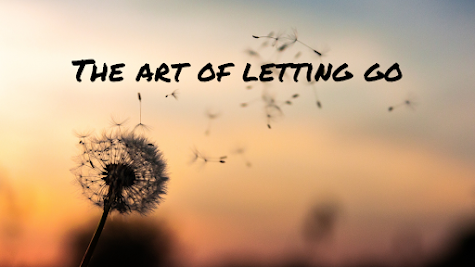The Art of Letting Go: How to Move On and Find Peace
Letting go is one of the most challenging yet transformative experiences in life. Whether it’s a failed relationship, a lost opportunity, or an unresolved conflict, the ability to release what no longer serves you can lead to profound personal growth and peace. Many people struggle with letting go, often feeling weighed down by past experiences and emotions. Here are some strategies to help you master the art of letting go and embrace a more peaceful, fulfilling life.
1. Acknowledge Your Feelings
The first step in letting go is to acknowledge your feelings. It’s natural to experience a wide range of emotions, from sadness to anger to confusion. Avoiding or suppressing these feelings can lead to more pain in the long run.
What to Do:
Take time to sit with your emotions. Journaling can be a powerful tool for expressing what you feel. Write down your thoughts and allow yourself to reflect on them without judgment.
2. Understand the Importance of Closure
Closure is essential for moving on. It provides a sense of completion, helping you to understand what happened and why. Without closure, it can be challenging to release the emotional hold of the past.
What to Do:
If possible, seek closure by having open conversations with those involved. If that’s not feasible, consider writing a letter expressing your feelings—even if you never send it. This act can help bring clarity and a sense of resolution.
3. Shift Your Perspective
Often, our inability to let go stems from a fixed perspective on a situation. Reframing how you view the experience can help you find meaning and lessons in the pain.
What to Do:
Ask yourself what you can learn from the situation. How has it contributed to your growth? Consider how your perspective might change if you viewed the experience as an opportunity for learning rather than just a loss.
4. Practice Mindfulness
Mindfulness is a powerful practice that encourages you to stay present and fully engage with your current experience. This can help you detach from painful memories and emotions tied to the past.
What to Do:
Incorporate mindfulness techniques into your daily routine. This could include meditation, deep breathing exercises, or simply taking a moment to observe your surroundings without judgment.
5. Surround Yourself with Supportive People
Having a strong support system is vital when you’re trying to let go. Friends and family can provide comfort, perspective, and encouragement as you navigate your emotions.
What to Do:
Reach out to those you trust. Share your feelings and experiences with them. Sometimes, just knowing someone is there to listen can make a significant difference in your healing process.
6. Engage in Self-Care
Self-care is crucial during times of emotional upheaval. Prioritizing your physical and mental well-being can help you regain a sense of balance and peace.
What to Do:
Establish a self-care routine that nourishes your body and mind. This might include exercise, healthy eating, adequate sleep, and engaging in hobbies that bring you joy.
7. Set New Goals
Letting go often creates space for new beginnings. Use this opportunity to set fresh goals that align with your values and desires.
What to Do:
Take time to reflect on what you want for your future. Write down specific, achievable goals and create a plan for how to reach them. Focusing on the future can help shift your attention away from the past.
8. Embrace Change
Change is a natural part of life, and embracing it can help you move forward. Instead of resisting change, recognize it as an opportunity for growth and new experiences.
What to Do:
Practice being open to change. This might involve stepping out of your comfort zone, trying new things, or adjusting your routines. The more you embrace change, the more resilient you become.
9. Forgive Yourself and Others
Forgiveness is a powerful step in the letting-go process. Holding onto grudges or self-blame can hinder your ability to move on and find peace.
What to Do:
Reflect on who you need to forgive, including yourself. Understand that forgiveness is about freeing yourself from the burden of anger and resentment, not necessarily condoning the actions of others.
10. Be Patient with Yourself
Letting go is not a linear process; it takes time and effort. Be patient with yourself as you navigate the ups and downs of healing. Recognize that it’s okay to have good days and bad days.
What to Do:
Practice self-compassion. Remind yourself that healing is a journey, and it’s normal to encounter setbacks along the way. Celebrate your progress, no matter how small.
The art of letting go is a vital skill that can lead to greater peace and fulfillment in life. By acknowledging your feelings, seeking closure, practicing mindfulness, and surrounding yourself with supportive people, you can release the past and create space for new possibilities. Remember, letting go is not about forgetting; it’s about freeing yourself to embrace the present and future with an open heart.







No comments:
Post a Comment